An "Angel Project" of Dinosaur Proportions1
Heather Tennison, Dianne van der Reyden2, Fei Wen Tsai, and Mary ParrishBackground
"Angel Projects,"3 traditionally held in conjunction with the American Institute for Conservation (AIC) annual meetings, provide local collections in need of conservation assistance with exposure to conservators interested in contributing their expertise. This version of an "Angel Project,"4 a modified version organized to coincide with the Society of American Archivist's (SAA) annual meeting, served as a pilot to work out and demonstrate a proposed procedure for the processing, rehousing, and reformatting of an important collection of historic scientific illustrations (Fig. 1).
Introduction
To cope with the enormous number of materials in their holdings, some archivists and collection managers, in the past, occasionally invoked a well meaning rule for ranking collections in need of care: original materials that had been published (i.e. had been made accessible through reproduction) might be ranked lower, with respect to preservation priority, then those that have not. There appears to have been times when this guideline was advocated for the sake of storage or short term cost benefit, with the unfortunate consequence that published materials were allowed to be discarded. The view that objects that have been reproduced are potentially expendable is not new, as there is even an interesting medieval precedence.
To scholars of Icelandic history and culture, the Sturlunga sagas, a large compilation of sagas named after an influential Icelandic family in the thirteenth-century, provide rich insight into the social and economic forces that were present in medieval Iceland.5 In the late fourteenth century, there were produced two vellum copies of this manuscript. When the 13th century original was lost, the 14th century vellum copies were, in effect, regulated to the status of "archival originals" (i.e. the oldest surviving examples). However, in the seventeenth century, to further increase access, the vellum copies were themselves transcribed into books made from inexpensive imported paper. After the information on the older vellum manuscripts had been transferred to the more accessible and easily read paper substrates, the "outdated" vellum codices were considered relatively valueless by the contemporary population. One of the copies was, for instance, cut up into a pattern for making clothes!6
Although it is fortunate that the stories detailed on those vellum folios were preserved for future use, it is highly unfortunate that all of the information inherent to the bound vellum volumes can no longer be accessed by modern day scholars of Icelandic history. As the seventeenth-century Icelanders viewed access as a viable means of preserving the information that was important to their cultural heritage, over two hundred years later some collection caretakers have, at times, embraced a similar line of reasoning. One case in point involves the preservation of scientific illustration collections, which, due to the very nature of their production (for the purpose of publication) makes them an ideal example of the rule: what is published soon may perish.
ACCESS: The Freedom or Ability to Readily Provide and/or Receive Information.
An increased demand for access to accurate scientific illustration in the 19th century was met by an explosion of new color and graphic techniques, such as the application of hand coloring to the then standard monochrome copper engraving and, in 1818, intaglio colored prints.7 Although these techniques offered an increased amount of visual clarity, they were only available in limited editions and thus could not meet the great need for volumes. In 1822, lithography was introduced to the scientific community in that year's volume of the American Journal of Science and Art.8 The lithographic medium proved to be particularly well suited to the needs of scientific illustration. Not only did the process allow the illustrator an increased amount of participation in the printing of the illustration, an act that was not possible with engraving techniques, but the product could also be produced on a much larger scale, thereby providing the necessary volumes that were desired.9
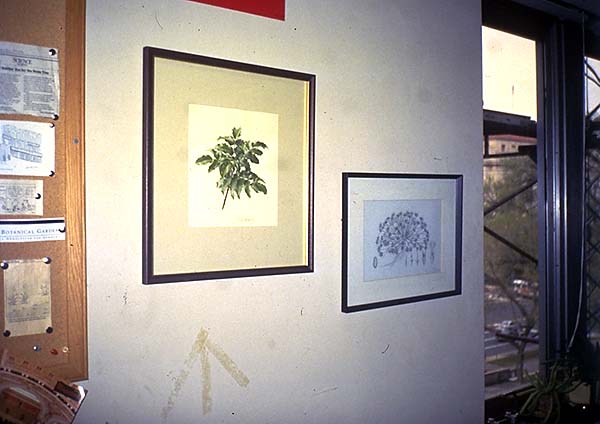
Fig. 2: Original type specimen illustrations are often used to decorate walls, leading to loss of research value as they fade and yellow from light exposure.
After the information has been made accessible through publication or reproduction, original illustrations and other related sketches and materials, noted and valued for their beauty by scientists and curators, have sometimes been used as decorative art (Fig. 2). Other times, they have been thrown away or left in piles to deteriorate unnoticed. This fate almost befell one of the most famous collections of drawings produced in the late nineteenth-century, the dinosaur type specimen illustrations of the O.C. Marsh Collection, portions of which are now at the Smithsonian Institution (SI).10
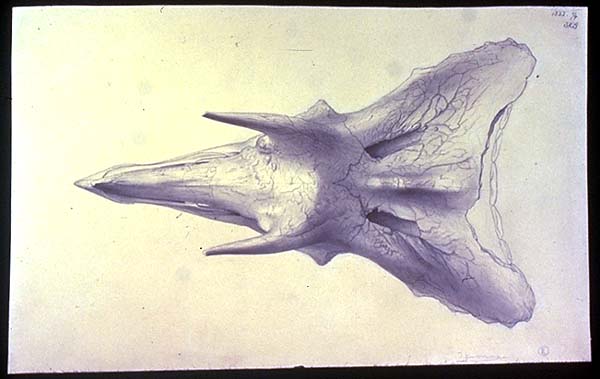
Fig. 1a: Top view of a Triceratops skull (Yale
University specimen). Published as lithographs in The
Ceratopsia, 1907.
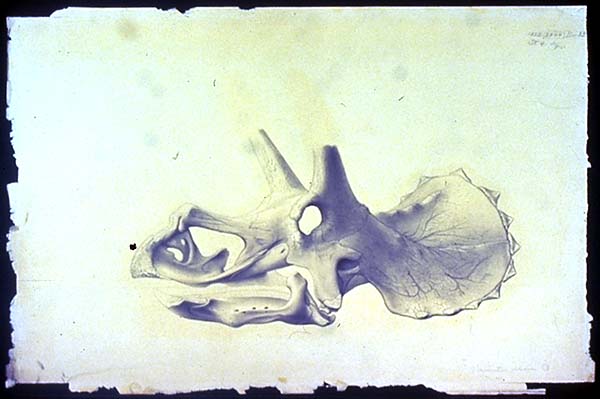
Fig. 1b: Side view of a Triceratops skull (Yale
University specimen). Published as lithographs in The
Ceratopsia, 1907.
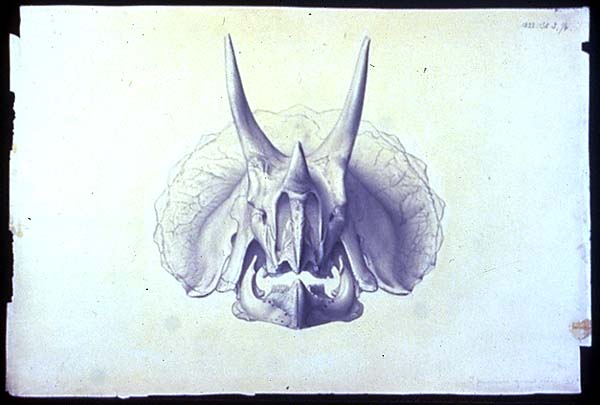 Fig. 1c: Front view of a Triceratops
skull (Yale University specimen). Published as lithographs in
The Ceratopsia, 1907.
Fig. 1c: Front view of a Triceratops
skull (Yale University specimen). Published as lithographs in
The Ceratopsia, 1907.
Paleontologist Othniel Charles Marsh, under the auspices of the U.S. Geological Survey and Yale University, was responsible for discovering and naming many of the dinosaurs that are household names today, such as Triceratops and Brontosaurus (now known as Apadasurus). The immense collection he amassed in the late nineteenth-century now forms the core of the dinosaur collection in the Division of Vertebrate Paleobiology at the National Museum of Natural History (NMNH), SI. In the 1980's, the original drawings of the specimens, prepared under the direction of Marsh for use in a series of important monographs (Fig. 3) that were to provide the first details as to the orders and families of vertebrates while "illustrating them in the most artistic manner,"11 were unearthed by a museum specialist who was investigating water damaged objects stored on the tops of cabinets in the department's type specimen room.
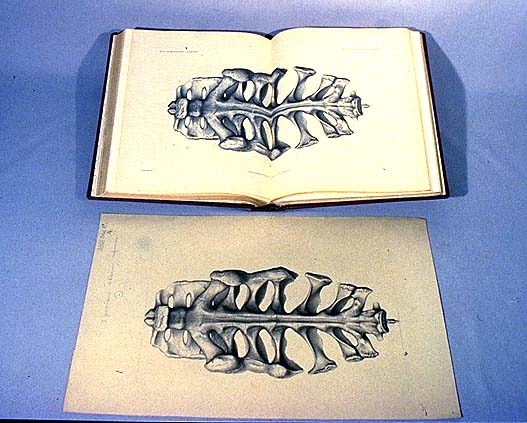
Fig. 3: Original drawing of a Tricertops sacrum
with the corresponding lithographic print found in The
Ceratopsia, 1907.
The Smithsonian's collection holds approximately 1,700 of these drawings, preparatory sketches and tracings found organized in folders that identify the specimen and the view that is depicted in the drawing, as well as identifying the drawings as having been either a wood-cut12 or a lithograph (Fig. 4).
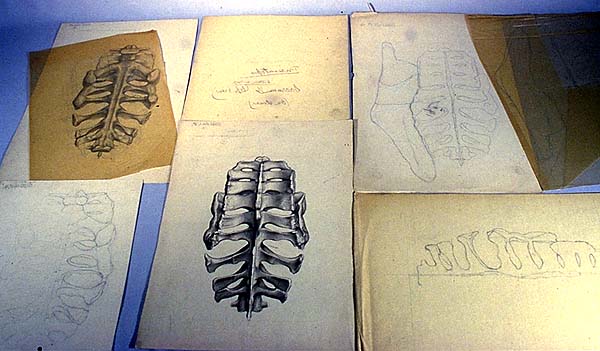
Fig. 4: The contents of the folder labeled "Triceratops sacrum 1/4
(top view):" the final drawing, 6 preparatory sketches, and the
final tracing that was used to transfer the image to the
lithographic stone.
When the Marsh illustration collection was located, its continuing historic and scientific value was assessed by some members of the department as being extremely high, despite the fact that it had been published. The drawings were offered to an archives that, due to their policies, were unable to accept them. Indeed, they reiterated the early principal of attributing a low preservation value to published materials.
Preservation: A Systematic program on a repository- or collection-level basis for extending the life of the carriers of information to serve the purpose for which the carriers and the information they contain were acquired. David B. Gracy II13
In July of 1995, approximately ten years after the rediscovery of the illustrations, the Conservation Analytical Laboratory's (CAL) Paper Conservation Lab, SI, was notified about the collection, its current housing (the drawings had been moved from the cabinet tops into wooden storage drawers in the department's type specimen room), and its relative condition. CAL, in collaboration with the Society of American Archivists (SAA), the Office of the Smithsonian Institution Archives (OSIA) and the Division of Vertebrate Paleobiology, NMNH, and with supporting materials and advice from the Library of Congress (LC) the National Archives and Records Administration (NARA) and the National Park Service (NPS), organized an "Angel Project."

Fig. 5: The integrated approach for the
preservation of this collection, as demonstrated at the SAA "Angel
Project." The amount of handling of an object, as well as labor
costs, can be reduced by processing, assessing condition, rehousing
and reformatting at the same time.
An integrated approach to the preservation of the collection was devised to reduce incidents of physical contact with the illustrations found within the collection (Fig. 5). The process began with the completion of a Preservation Priority Worksheet that was originally developed by the SAA in collaboration with the Research Libraries Group and the Commission on Preservation and Access in October, 1993 (Appendix I).14 This survey tool utilizes a numerical ranking system and easily-followed matrices to plot the overall value, exposure, and risk of a collection, allowing for unbiased comparison among many different types of collections. Since there were three additional collections of illustrations and other related materials besides the Marsh Collection housed in the Division of Vertebrate Paleobiology,15 this quick survey allowed the staff an opportunity to rank and compare the overall values, problems and needs of each of the collections. The data generated by the survey was then entered onto a Preservation Priority Data Base so that the general collection needs could be easily evaluated in order to determine which collection within the repository should be targeted for treatment, rehousing and/or reformatting. The Marsh Drawing Collection was chosen for the SAA pilot project based upon its number one priority ranking coupled with its great holding maintenance need, where the lower the number the greater the need (Figs. 6-7).

Fig. 6a: The completed Preservation Priority Form
(verso) for the Marsh Drawing Collection assigns a numerical value
to the needs of the collection.

Fig. 6b: The completed Preservation Priority Form
(verso) for the Marsh Drawing Collection assigns a numerical value
to the needs of the collection.
| Bureau | Collection | Housing Need | Poor Housing | Poor Positioning | Difficult Formats | Damaging Attachments | Holdings Maint. Need (Sum) | Use | Exposure | Amount of Damage | Amount of unstable material | overall Condition | Risk | Value | Preservation Priority Score | |
| N M N H | F I S H | Fish ill. | 2 | 4 | 6 | 12 | 11 | 35=A | A | A | B | A | A | A | A | 1 |
| X-Ray file | 11 | 13 | 15 | 22 | 20 | 81=C | A | B | C | C | B | C | A | 5 | ||
| Ichthyologists | 2 | 4 | 10 | 10 | 15 | 41=A | A | A | C | B | B | A | A | 1 | ||
| B O T A N Y | Evans ill. | 2 | 4 | 6 | 12 | 20 | 44=A | A | A | A | B | A | A | A | 1 | |
| Mee Ill.. | 2 | 6 | 15 | 8 | 25 | 56=B | A | A | B | C | B | A | A | 1 | ||
| Hughes ill. | 2 | 4 | 6 | 17 | ii | 40=A | C | A | C | A | A | A | A | 1 | ||
| Framed ill. | 2 | 4 | 6 | 8 | 15 | 35=A | A | A | A | A | A | A | A | 1 | ||
| A N T H R O | ACee Blue Eagle | 2 | 4 | 7 | 8 | 23 | 44=A | B | A | B | A | A | A | A | 1 | |
| Dv. Archeological Map | 2 | 5 | 15 | 9 | 15 | 46=A | A | A | A | C | A | A | A | 1 | ||
| Numbered Mss. | 3 | 5 | 10 | 12 | ii | 41=A | A | A | A | B | A | A | A | 1 | ||
| River Basin Surveys | 2 | 4 | 6 | 6 | 20 | 40=A | C | B | C | C | C | C | B | 6 | ||
| BAE Map Coll. | 16 | 5 | 20 | 20 | 15 | 76=B | A | A | A | A | A | A | A | 1 | ||
| D I N O | Marsh Dwgs | 2 | 4 | 6 | 8 | 20 | 40=A | A | A | A | A | A | A | A | 1 | |
| Marsh Archives | ||||||||||||||||
| US Geological survey | ||||||||||||||||
| Gilmore Archives | ||||||||||||||||
Once a preservation priority survey has identified a collection as a priority and targeted its general needs (such as the need to be rehoused), staff time and energy can be allocated to prepare for future preventive conservation initiatives. In the case of large collections, the next step might be a Random Sampling Survey16 of individual items within the collection to determine specific needs, such as types of housing. For instance, by surveying ten percent of the collection (noting size, condition, medium, etc.) using a randomly generated numerical system to designate specific objects within the collection, the housing needs of the collection can be quantified and necessary supplies determined and ordered. Done correctly, this technique allows a detailed and statistically accurate assessment of extremely large collections in a very short amount of time (for instance, a collection of 5,000 objects in one week by one surveyor).
After appropriately surveying the collection, one can begin to gain intellectual control over the collection. For this "Angel Project," an OSIA archivist outlined the procedures of this important step. Folder lists were created that would aid in the future retrieval of objects by providing specific information about the contents of each individual folder, as well as the collection as a whole. Information that was derived from the collection and knowledge pertaining to the history of the collection, as well as the technology that was used in the production of the published images, was helpful for the completion of the lists. Curators from the Division of Graphic Arts, National Museum of American History (NMAH) gave advice as to the order in which the illustrations could have been produced. It was verified at this time that the collection held a relatively complete series exemplifying the lithographic transfer process, beginning with preparatory sketches of the fossils and finishing with the tracings that were utilized in the transfer of the drawing to the lithographic stone.17
Proper housing and reformatting, two integral components in the preservation of a collection, are the next steps in this systematic approach. By providing a protective barrier between the illustrations and the environment (or researchers who may be studying at the collection), and by enabling access to the images without handling of the original illustration (which could remain in storage), these actions promote the continued care of the collection.
In devising proto-type housing for the collection, decisions were based on the sensitivity of the media and the fragility of the substrate. For example, custom-sized polyester L-welds (for thin tracings) and flush folders (for the friable graphite drawings) were used for this project.18 Table I, which illustrates housing options for various paper-based items, can be utilized in this step. It was recommended that the collection be relocated from their current housing in wooden drawers to museum quality storage, like closeable map cases of fused powder-coated chromium-plated steel or anodized aluminum, to further protect the illustrations from fluctuating environmental conditions and other unplanned disasters.19
The reformatting of the collection takes place after the illustrations have been stabilized through the rehousing efforts. Selection criteria for determining reformatting options (such as preservation photocopies, microfilm, large format roll or sheet film or transparencies, or digital scanning) should be made in advance, based on the needs of the collection, financial limitations, the technology and time available, as well as staff training (Fig. 8).20
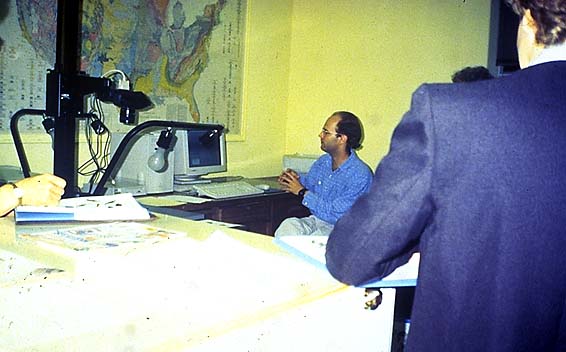
Fig. 8: Andrew Robb, CAL Post-Graduate Intern in
Photography Conservation, demonstrates a digital imaging program for
the SAA "Angel Project."
Preservation And Access
Once the collection has been processed, the document types identified, selections made for enclosures (such as mats, polyester sleeves and folders, containers, and furniture) and the collection reformatted (Fig. 9), the accessibility (and consequently the value) of the collection will logically increase. This fact--that easier access to a collection leads to its increased value as a holding--should have dictated in the beginning that the preservation of this collection, and others like it, should never have been considered inconsequential.

Fig. 9: Steps, with options, for the processing,
rehousing, and reformatting of a paper-based collection.
The advent of the Internet, and the concurrent explosion in the demand for information, has the potential for increasing this problem of "publish, then perish." As more and more funds are diverted to digital imaging programs, additional funds must be slated to insure that original materials, and the chemical and physical information that can in no way be fully reproduced by even the most advanced reformatting techniques, are stabilized by proper care and storage, rather then allowed to degrade.
Through the collaborative efforts of museum professionals, conservators, and a new breed of information managers, simple solutions, like the integrated approach outlined in this "Angel Project," can be advocated to preserve the original materials and the evidence inherent in them.
Acknowledgements
The authors would like to give their thanks to Mike Brett-Serman and the staff of the Department of Paleobiology, NMNH, SI; Paul Theerman, Tammy Peters and the staff of OSIA, SI; Elaine Hodges; Andrew Robb, Holly Anderson and the staff and supervisors at the Conservation Analytical Laboratory, SI; the SAA "Angels;" and Alice Tangerini. Also, we would like to thank Lisa Mibach, for inspiring the "Angel Project," and Sarah Wagner and Karen Garlick, for information pertaining to the Preservation Priority Worksheet.
Notes
1. Presented as "Publish, then Perish: The Reclamation of a Collection of Scientific Illustrations" at the 1996 AIC Annual Meeting in Norfolk, VA
2. Author to whom correspondence should be addressed.
3. The "Angel Project" was originally conceived and organized by Lisa Mibach, a conservator in private practice, in 1988
4. The idea of sponsoring an "Angel Project" has been used by other individuals. For example, Elizabeth Morse, Paper Conservator at the Harvard University Library, organized one to aid in the execution of a large survey.
5. J.L. Byock. Medieval Iceland: Society, Sagas, and Power (Berkeley: University of California Press, 1988)
6. J. Helgason. Handritaspjall (Reykjavik: Mal og menning, 1958)
7. C. Wood III. "Prints and Scientific Illustration in America" Prints in and of America. John D. Morse, ed. (Charlottesville: University Press of Virginia, 1970)
10.The bulk of the collection can be found at Yale University, one of the institutions that funded the expeditions.
11. Henry F. Osborn. "For the Monograph on Vertebrate Paleontology" introduction to The Ceratopsia, J.B. Hatcher, O.C. Marsh and R. Lull (Monographs of the U.S.G.S. volume XLIX, 1907)
12. It is believed that when the term "wood-cut" was used here it actually refers to wood engraving.
13. D.B. Gracy II. "Don't Swat the Skunk: The Preservation Imperative" Advances in Preservation and Access Volume 2. ed. B.B. Higginbotham (Medford, NJ: Learned Information, Inc., 1995)
14. The Commission on Preservation and Access Task Force on Archival Selection. "Preservation Priority Survey" (Washington, D.C.: The Commission on Preservation and Access, 1993)
15. These collections are currently labeled as the "Gilmore Archives" (14 envelopes housing approximately 470 drawings and photographs), the "Marsh Archives" (approximately 300 prints, grouped together with metal fasteners), and the "U.S. Geological Survey" (approximately 640 prints and drawings).
16. See D. van der Reyden. "Case Studies in Photography Conservation at the Smithsonian Institution, Including a Survey of 15,000 Photographs" The Imperfect Image: Photographs, their Past, Present and Future. Conference Proceedings for the Center for Photographic Conservation April 6-10, 1992. Windermere, Cumbria, England, United Kingdom
17. The tracing paper exhibits a whitish outline that follows the contours of the corresponding drawing, characteristic of the scoring that would be seen in the engraving process of the lithographic transfer. C.W. Hackleman. Commercial Engraving and Printing: a manual of practical instruction and reference covering commercial illustration and printing by all processes. (Indianapolis, IN: Commercial Engraving and Publishing Company, 1921)
18. For housing options, see D. van der Reyden. "Paper Documents," Storage for Natural History Collections: A Preventive Conservation Approach. eds. C.L. Rose, C.A. Hawks and H.H. Genoways (Pittsburgh, PA: Society for the Preservation of Natural History Collections)
20. For an example of cost benefit analysis for photographic collections, see S. Puglia. "The Preservation of Acetate Film Materials: A Cost-Benefit Analysis for Duplication and Cool/Cold Storage" Topics in Photographic Preservation volume six (1995)
Figures and Tables
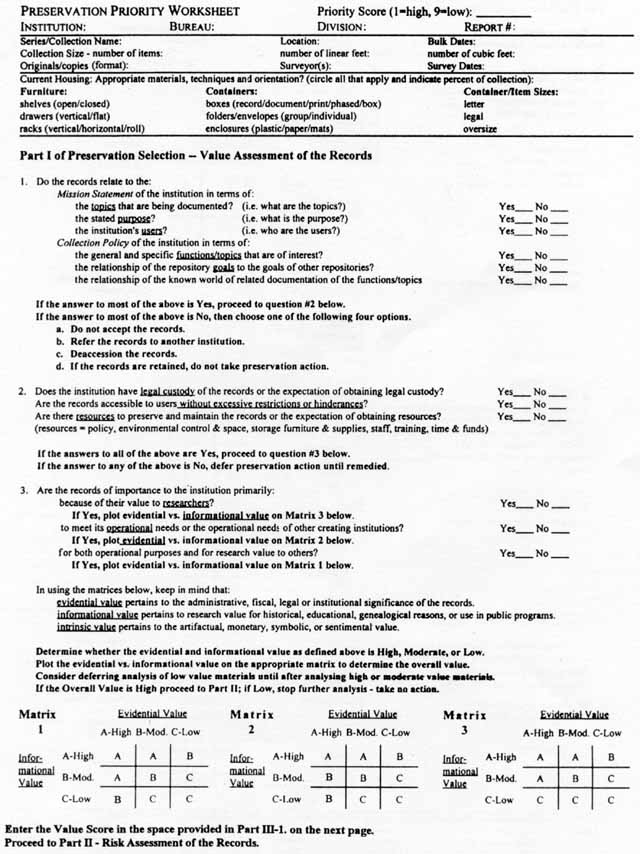
Blank preservation priority worksheet (recto)

Blank preservation priority worksheet (verso)
PRESERVATION PRIORITY DATA BASE
| Institution: | Bureau: | Division: |
| Date: | Collection Contact/Phone: | Conservator/Phone: | Report Number: |
| Bureau | Collection | Housing Need | Poor Housing | Poor Positioning | Difficult Formats | Damaging Attachments | Holdings Maint. Need (Sum) | Use | Exposure | Amount of Damage | Amount of unstable material | overall Condition | Risk | Value | Preservation Priority Score |
Blank data base worksheet (recto)
The Following is taken from the Commission on Preservation and Access Report of Task Forces on Archival Selection
The five holding maintenance needs are: (p.29)
- l. primary or secondary physical protection examples include containers, boxes, riling cabinets, or secondary enclosures such as folders;
- inappropriate materials used for physical protection--examples include acidic folders or boxes, poor quality plastic sleeves, paperboard boxes to store magnetic media instead of non-debris forming plastic containers with hubs, rusty film cans;
- poor positioning of records within containers, on shelves or in enclosures-examples include containers which are overstuffed or underfilled without adequate rigid support to prevent slumping; documents misaligned within boxes or enclosures; magnetic tape or motion picture film improperly wound (too loose/too tight) or unevenly wound so that the edges are not all aligned across the reel; records requiring either horizontal or vertical shelving shelved otherwise, such as magnetic tapes that are shelved horizontally instead of vertically, motion picture that is shelved vertically instead of horizontally, glass plates and audio disks that are stacked horizontally instead of rigidly supported vertically on their long edges;
- format related problems--examples include inflexible or brittle documents which are folded or rolled, oversized documents, fragile materials, unspooled magnetic tapes or motion picture film, papers folded and stuffed into tape enclosures/containers; (ROLLED MATERIALS MUST BE HUMIDIFIED)
- damaging attachments--examples include rusting fasteners, rubber bands, oozing or brittle pressure sensitive tapes, heavy twine, acidic wrappers or mounts, improperly applied or inappropriate leader labels attached to magnetic tape, motion picture, or microfilm.
Definition of Evaluative Terms for Existing Damage/Deterioration (p.33)
High level of damage/deterioration means that the majority of the materials have significant structural damage so that they cannot he safely handled at all or to any useful degree in their current condition. The materials are in poor condition. Preservation attention is required for safe handling of the materials.
Moderate level of damage/deterioration means that the majority of the materials have some structural damage, hut they can be safety handled in their current state. The materials are in moderate/fair condition. However safe handling may require extra precautions and care. Preservation attention is required, hut it can he postponed in the short term.
Low level of damage/deterioration means that the majority of the materials are structurally sound and can he safely handled. The materials are in good condition. Preservation attention is not required or can he postponed for the long term.
Selected Examples of Evaluative Terms
High Level of Damage/Deterioration (Poor Condition) (p.33-34)
- Wet or damp materials, especially those with active mold (powdery, fuzzy, and/or colored growths); (EMERGENCY)
- Extremely brittle materials with or without extensive breaks, tears, and/or losses; (REHOUSE)
- Distorted, rolled, or folded materials that are inflexible, extremely weak, or brittle so that they cannot be safely opened or flattened without conservation treatment; (HUMIDIFY)
- Materials that are stuck together due to previous water damage, damaging attachments (such as oozing pressure sensitive tapes), or some other came; (CONSERVATION TREATMENT)
- Materials with severe media deterioration, such as highly acidic writing inks that have perforated the documents, severe flaking of photographic emulsions, delamination or "oxide shedding of magnetic tape layers, severe shrinking of motion picture ruin, etc; (REHOUSE) 6. With photographic media: in addition to any of the above problems; severe film hose deterioration (bubbling/channelling or shrinkage of acetate film, severe staining and embrittlement of nitrate film), extensive breakage of glass plates, etc; (EMERGENCY)
- With bound materials: in addition to any of the above problems; multiple detached pages, sections, or mounted materials in scrapbooks or albums; and extensive broken sewing; (HOUSE IN BOX)
- With magnetic media: in addition to any of the above problems; oxide layer shedding exists throughout the length of the tape rendering the tape unusable/unreadable, tape lubricants have evaporated to the extent that the tape cannot he moved through a tape drive. (EMERGENCY)
Moderate Level of Damage/Deterioration (Moderate Condition) (p.34)
- Materials with previous water damage, but not currently damp, musty (indicating active mold), moldy or stuck together;
- Distorted, rolled or folded materials with some inflexibility, hut can he safely opened or flattened with care and without conservation treatment 3. Materials (except those that are extremely brittle) with some tears and/or losses that are not extensive enough to impede safe handling;
- With photographic media; in addition to any of the above, film base materials with a slight odor and/or minor dimensional changes such as warping, minor edge flaking of emulsions;
- With bound materials: in addition to any of the above, loose or minor breaks in sewing, detachment of a few pages or a few mounted materials in scrapbooks or albums;
- With magnetic media: a moderate amount of oxide shedding may exist primarily at the ends of the tape, or the plastic carrier may he cupped or warped, minor evaporation of tape lubricants such as that the tape can be relubricated sufficiently for one-time playback, the tape may he usable/readable.
Low Level Damage/Deterioration (Good Condition) (p.35)
- Flexible, strong materials, even If they are apparently of poor quality such as newsprint or poorly processed photographs and have the potential in deteriorate;
- Rolled or folded materials that are flexible and strong and that can he opened safely using standard handling procedures;
- Materials with minor edge tears and losses;
- With photographic media; in addition to the above, film base materials with no discernable odor or dimensional changes/distortions;
- With bound materials: in addition In the above, intact or slightly loose sewing, or slightly loose mounted materials in scrapbooks or albums;
- With magnetic media: the tape pack may he dusty or dirty, there may he minor oxide shedding, the tape is usable/readable.
Definitions of Evaluative Terms for Inherently Unstable Materials (p.36)
High Amounts of unstable materials mean that the majority of the materials (>2/3) are highly unstable, as defined above, even if the materials are currently in good condition.
Moderate Amounts of unstable materials means that a moderate amount of the materials (1/3 to 2/3) are highly unstable, as defined above, even if the materials are currently in good condition.
Low Amounts of Unstable Materials means that a low amount of the materials (<1/3) are highly unstable, as defined above, even if the materials are currently in good condition.
How to apply survey findings to grant requests supporting preservation activities * Addition by Dianne van der Reyden
A. If holdings maintenance score is high, need improvement in housing:
- item level survey to estimate supply types and amounts
- determine sources and cost of rehousing resources (funding, supplies, equipment, staff, time, space)
- Train staff in holdings maintenance procedures
B. If exposure score is high (holdings maintenance vs use), may want to reformat material for use by researchers.
C. If risk score is high (exposure vs physical condition), need to
- item level survey for material types and deterioration
- rehouse and/or reformat
- implement conservation treatment
| SUPPLIES | Type of Item | |||||||||||||
|---|---|---|---|---|---|---|---|---|---|---|---|---|---|---|
| (NOTE: Preferred materials and techniques only checked; others may be approved) | 1 | 2 | 3 | 4 | 5 | 6 | 7 | 8 | 9 | 10 | II | 12 | 13 | |
| INK (not friable) | PENCIL | RELIEF OR INTAGLIO PRINT | PLANOGRAPHIC PRINT | HAND- COLORED PRINT | WATERCOLOR | PHOTOGRAPH | DOCUMENT OR MANUSCRIPT SHEETS | NEWS PRINT | PHOTOCOPY | NEGATIVE SLIDE | BOUND VOLUME | OTHER | ||
| POLYESTER | L-WELD | X | X | X | X | X | ||||||||
| POCKETS | X | X | X | X | X | |||||||||
| MATCHBOOK WRAP | X | X | X | X | ||||||||||
| BOOK BAND | X | |||||||||||||
| X | ||||||||||||||
| BOOK JACKET | X | |||||||||||||
| POLYESTER BOOK | X | |||||||||||||
| POLYETHYLENE STRIPS | X | |||||||||||||
| ACID- FREE FOLDER PAPER | FOLDER | X | X | X | X | X | X | X | X | X | ||||
| FLUSH FOLDER | X | X | X | X | X | X | X | X | ||||||
| FOUR FLAP FOLDER | X | X | X | X | X | X | X | X | ||||||
| ACID-FREE MAT-BOARD | WINDOW MAT | X | X | X | X | X | X | X | ||||||
| WINDOW MAT WITH WRAPPER | X | X | X | X | X | X | X | |||||||
| SLING MAT | X | X | X | X | X | X | X | |||||||
| SINK MAT | X | X | X | X | X | X | X | |||||||
| INSERT MAT | X | X | X | X | X | X | X | |||||||
| JAPANESE TISSUE HINGE(V OR T) | X | X | X | X | X | X | X | |||||||
| PHOTO CORNERS | X | X | X | X | X | X | X | |||||||
| HORIZONTAL BOX | PRINT BOX | X | X | X | X | X | X | X | ||||||
| VERTICAL BOX | PHASE BOX (4 flap) | X | X | X | X | |||||||||
| DOCUMENT BOX | X | X | ||||||||||||
| RECORD BOX | X | X | ||||||||||||
| NOTE ALL MATERIALS ARE ACID-FREE OR BUFFERED UNLESS NEUTRAL IS REQUIRED FOB SENSITIVE MEDIA. ALL TECHNIQUES ARE NON-ADHESIVE UNLESS SINGING | ||||||||||||||
Heather Tennison, Dianne van der Reyden, Fei Wen Tsai, and Mary Parrish
Smithsonian Institution
Publication History
Received: Fall 1996
Paper delivered at the Book and Paper specialty group session, AIC 24th Annual Meeting, June 10-16, 1996, Norfolk Virginia.
Papers for the specialty group session are selected by committee, based on abstracts and there has been no further peer review. Papers are received by the compiler in the Fall following the meeting and the author is welcome to make revisions, minor or major.